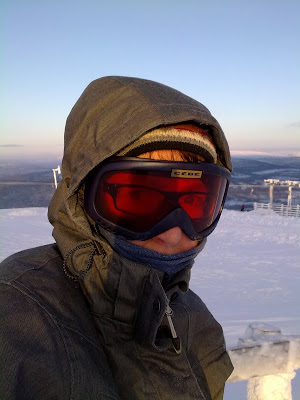Efter den oerhörda responsen jag fick när jag outade att jag ska föreläsa i Barcelona kommer nu ett utdrag ur det Abstract som är inskickat som förklaring på vad jag ska tala om, läs och begrunda!
The Nordic Perspective - A Communicative Surrounding - necessary for persons with complex communication needs
Boel Heister Trygg, SLP, MSc The Southern Region Communication Centre, Malmo, Sweden and Linda Björk, Växjö municipality.
www.sokcentrum.se;
sok@sokcentrum.sePeople with severe disabilities and complex communication needs have a lot of difficulties in being respected, to be taken seriously, to get a good care; briefly to fulfil their rights of communication. The most important issue in AAC services is to offer a surrounding which meets different communication needs and allow different ways of communication and communicative and linguistic growth. This is also the most challenging issue for the AAC providers. The question is how to create such a surrounding? What criteria shall be met?
The staff in the Southern Region Communication Centre has made a description with criteria for building a communicative surrounding for persons with complex communication needs and has presented this in several public media. In the description of a communicative surrounding are specified, for example:
The staff ´s competence and education, behaviour, treatment
Activities with a focus on communication
Need of peers with similar needs and ways of communication and ways to facilitate direct communication between peers
Ethics and rights
In the session we present these criteria in details and we also present a group of adults with severe motor disabilities, intellectual impairment and no speech. You will see video clips and listen to practical examples of case stories.
The background of the group is this: It started in 1996 when the big day care centre in Växjö, a small town in Sweden, should be split up into several smaller settings. From the beginning there were four persons participating, all with severe motor disabilities, intellectual impairment and no speech.
During the years the staff has worked out a very theoretically and practically based method for a good communicative setting that strengthens the participants in their communication and as a result of that in many other areas as well. The aim has been from the beginning and still is to offer an opportunity for adults with the need of augmentative and alternative communication to get good living conditions during their days in the day care setting and to offer them meaningful days as well as to develop their communicative skills.
Part of the method is: Communication is central in every activity; communication takes most of the time; spontaneous communication is encouraged between the participants, with staff, with people in the society. Communication aids are always accessible; every person in the staff is familiar to the different ways and aids of communication (body language, gestures, sounds, sign language, manual signs and graphic symbols and pictures); all staff use manual signs frequently etc. The most important goal is to offer opportunities for a good every-day communication where communication between staff and participants and between participants is possible not only during the working days but also in leisure time.
The communication group has grown and many applicants cannot be accepted as participants in the group. There is a need for many more settings of this kind and the group has nowadays an important role in spreading knowledge about AAC to others in the community and welcomes also staff and others from other parts of Sweden to visit their group as a model for building up similar surroundings in other parts of Sweden.









 Egentligen skulle man väl vara ute, åka pulka och dricka varm choklad när det är sån härlig vinter men att gå på bio, käka popcorn och dricka läsk nedsjunken i en varm biofåtölj är ju inte helt fel det heller och när ska man annars göra det??
Egentligen skulle man väl vara ute, åka pulka och dricka varm choklad när det är sån härlig vinter men att gå på bio, käka popcorn och dricka läsk nedsjunken i en varm biofåtölj är ju inte helt fel det heller och när ska man annars göra det??



















 Gott nytt år!
Gott nytt år!